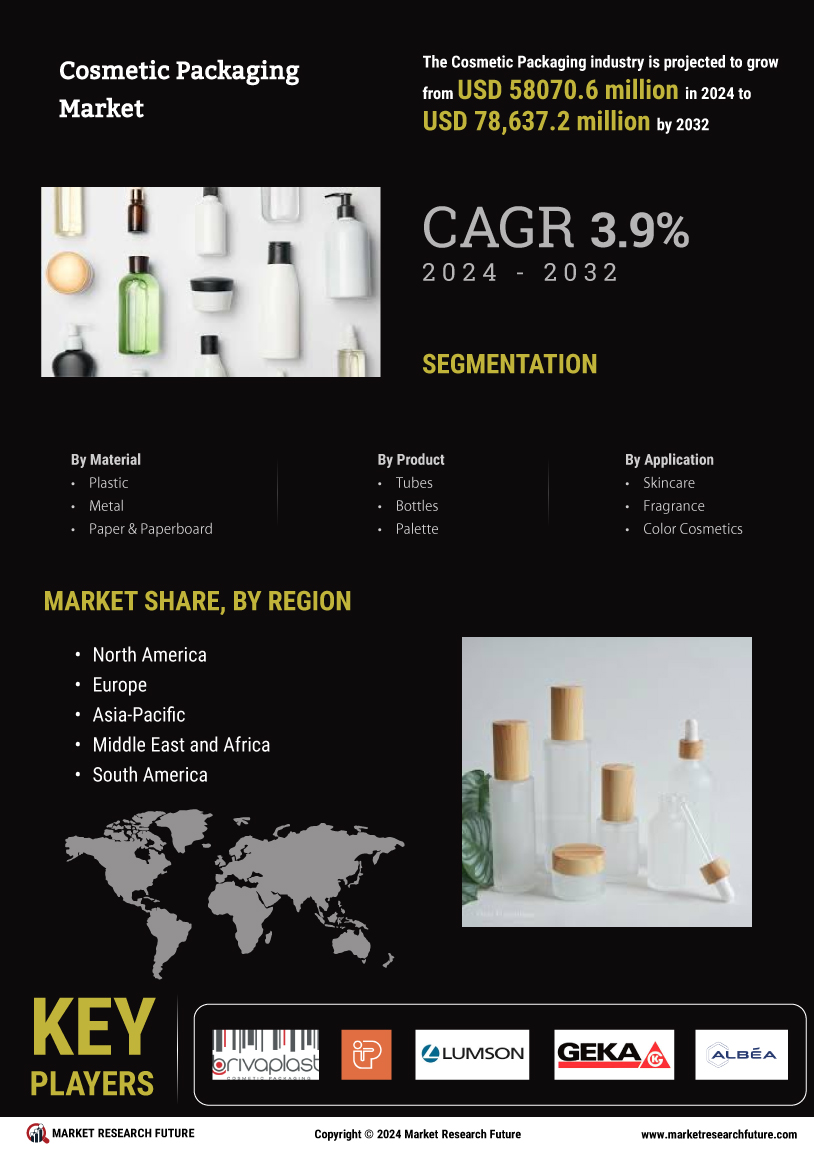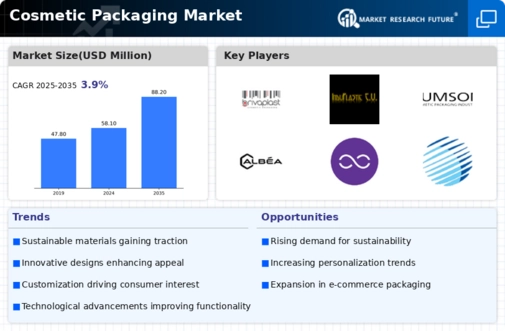By Region, the study provides market insights into North America, Europe, Asia-Pacific, Middle East & Africa, and South America. The Asia-Pacific Cosmetic Packaging Market accounted for largest market share in 2022 and is expected to exhibit a significant CAGR growth during the study period. The growth of the Asia-Pacific Cosmetic Packaging Market industry with the growth of population and the rising per capita disposal income is anticipated to drive the Asia-Pacific Cosmetic Packaging Market in this region during the forecast period. In addition, Asia Pacific countries exhibit the fastest economic growth rates worldwide.
Therefore, the Asia-Pacific region is expected to be a significant market propelling the global Packaging industry, with augmented Packaging activities in China, India, Japan, Australia and rest of Asia Pacific countries.
In February 2024, APC Packaging announced the launch of EAPP EcoReady: its eco-friendly all plastic airless pump system technology for beauty/cosmetic industry that uses plastic while still employing airless technology to make dispensing more eco-friendly.
Figure 3: Cosmetic Packaging Market, by Region, 2023 & 2032 (USD Million)

The North America region includes major markets such as the US, Canada, and Mexico. . The U.S. has a large and sophisticated consumer base with a high demand for cosmetic and beauty products, influencing packaging trends. Continuous innovation in packaging designs, materials, and technologies to meet the evolving preferences of consumers. Growing emphasis on sustainable packaging, leading to increased adoption of eco-friendly materials and practices. Canada's cosmetic packaging market is also experiencing growth, albeit at a slightly different pace compared to the U.S. Stringent regulations regarding packaging materials and labeling influence packaging choices in the Canadian market.
The rise of e-commerce in the beauty industry has influenced packaging strategies to enhance the online shopping experience. Mexico is an emerging market for cosmetic packaging, and several factors contribute to its growth. A growing middle class with increasing disposable income is driving the demand for cosmetic products and, subsequently, their packaging. Integration into global markets has exposed Mexican consumers to a wide range of beauty products, impacting packaging preferences.
Across North America, there is a growing trend towards sustainable packaging solutions, including recyclable materials and reduced environmental impact. Brands are investing in customized and aesthetically pleasing packaging to differentiate themselves in a competitive market. Integration of digital technologies, such as QR codes and augmented reality, to enhance consumer engagement and provide additional information about products. In conclusion, the cosmetic packaging market in North America, including the U.S., Canada, and Mexico, is dynamic and influenced by factors such as consumer preferences, regulatory landscapes, and sustainability considerations.
As the beauty industry evolves, packaging manufacturers are likely to adapt to emerging trends to remain competitive in this market.






















Leave a Comment